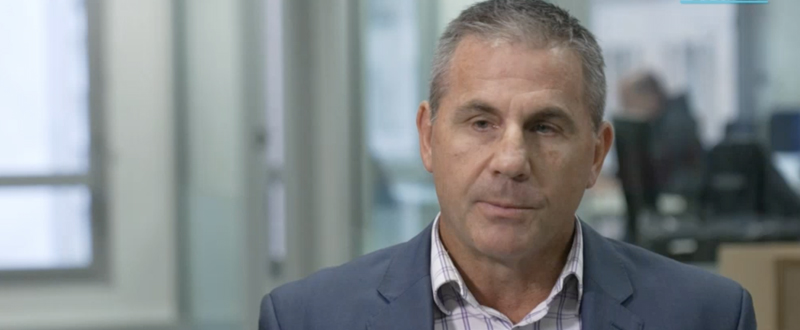Every business needs to track the lifecycle of their products and services to support business growth. Inventory management is the process of sourcing, storing, and selling inventory, whether it is raw materials, goods in production, or the final products to be on-sold to the end-user. Holding inventory costs money, such as the cost of storage (like warehouse rent), inventory shrinkage, and depreciation.
Managing your business’s inventory lifecycle can significantly impact the viability and cost-effectiveness of your operations. When neglected, many areas of your business can be affected, such as logistics, customer service, and your finances. Let’s take a look at how to improve your inventory management practices by learning about the cash to cash cycle and some additional techniques that best-in-class companies use for inventory management.
What is the Cash to Cash Cycle?
Cash to cash cycle (C2C) is the time between when your business pays the supplier up to the date when the sales payment is received. It’s an excellent indicator of the amount of cash needed to fund ongoing operations, tracking your inventory purchases, stock holding, sales lead times, and more.
C2C calculation: Days inventory on hand + Days sales outstanding – Days payables outstanding = Cash to cash days
So for example, if you have 20 stock days, your customer pays within 50 days, and your credit terms with the supplier are 40 days, the C2C would be equal to 30 days.
This means you need to manage the cash flow gap for 30 days. A longer C2C cycle means a longer gap that your business will need to address. This part can be tricky since you need sufficient liquidity, or cash reserves, to cover this period.
Tools and Techniques to Manage Your Inventory
Held inventory and the resulting cash flow gap may prevent your business from growing since essential working capital is locked up that you could otherwise spend and invest in your business.
Managing your inventory is needed to ensure that this won’t happen, or at least, the impact is minimised. Here are some tools and tips that may help you, depending on your business type or product:
- Economic order quantity (EOQ) is a formula used to calculate the ideal order quantity you need to have in your upcoming inventory. This takes into account the costs of production, demand rate, as well as many other factors. The EOQ model ensures that your business minimises related costs while having the optimal levels of inventory on hand. This means that your business doesn’t have to frequently make orders and instead, has confidence in the forward order book and planned quantities. With this method, some companies are able to free up meaningful cash tied up in their inventory.
- Just-in-time (JIT) management allows businesses to reduce inventory costs. This strategy is focussed on making sure you only keep the inventory on hand needed to produce and sell your products – thereby lessening the costs for storage, insurance, and risk of dead stocks. This may be appropriate when the consequences of insufficient inventory are low.
- Safety stock inventory is a technique used to acquire sufficient inventory designed to meet the demand – or at least prevent stockout for unforeseen customer demand. It’s like a ‘backup’ for your business. To make sure that this safety switch won’t strain your finances, here is the primary method to decide how much safety stock inventory you should have on hand:
-
- Maximum daily usage multiplied by maximum lead time in days.
- Average daily usage multiplied by your average lead time in days.
- Then calculate the difference between the two to know your safety stock level.
- ABC analysis is a technique used to identify what’s important, and what’s less critical by ranking all inventory items based on the total value of each on an annual basis. Any inventory that ranks a C should be considered for removal as it likely doesn’t offer any benefit financially, or otherwise, to the business.
- A – most valuable and contributes the most to your profit
- B – Products that are in between most and least valuable
- C – least important to the business
- A – most valuable and contributes the most to your profit
- Predicting your inventory needs is best done when you have sufficient data on hand. Data can help identify critical metrics such as your fixed and variable costs associated with each product and service. It also helps determine the amount of cash you need for a buffer, or how much money you’ll need to borrow for your business’s upcoming expenses.
These are some tools that may help you:
-
- NetSuite – A business management software which has a tremendous low-cost enterprise system.
- Tableau – Helps you understand data by utilising helpful and easy-to-understand visual analytics.
- Unleashed Inventory Management – Offers real-time inventory control and reporting. It can also be used to connect with cloud-based business software systems.
If you’re still having issues filling the cash flow gap generated by your inventory cash cycle, you may consider accessing additional financing. OptiPay is here to help you access the cash you need today with our accounts receivable funding facilities.
Who is OptiPay?
OptiPay, one of Australia’s leading business finance providers, has been dedicated to helping small business owners solve cash flow challenges for over a decade and has provided $1.5 billion in business funding to more than 500 Australian businesses. OptiPay specialises in modern financing solutions such as invoice factoring, invoice finance, debtor finance, and lines of credit. OptiPay’s mission is to support business growth providing liquidity in as little as 24 hours, ensuring they have access to tomorrow’s cash flow today. This rapid access to funds helps businesses maintain smooth operations and seize growth opportunities without the stress of cash flow constraints. At OptiPay, we believe that healthy cash flow is the lifeblood of any successful business. Our commitment to helping businesses overcome financial hurdles and achieve their growth ambitions has solidified our reputation as a trusted partner in the business finance sector. Whether you are looking to stabilise your cash flow, expand your operations, or navigate financial challenges, OptiPay is here to support your journey with innovative and efficient financing solutions.



